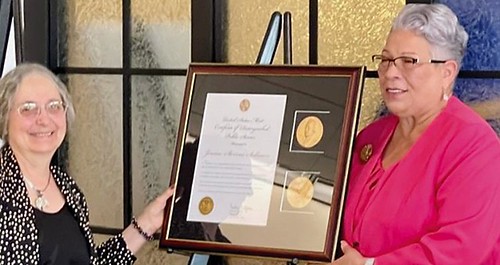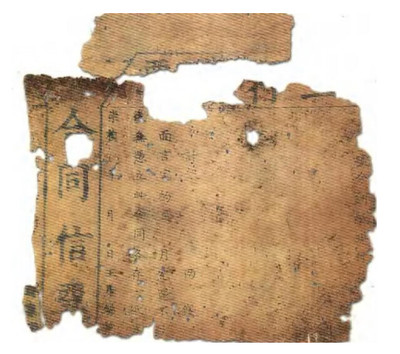
PREV ARTICLE
NEXT ARTICLE
FULL ISSUE
PREV FULL ISSUE
V25 2022 INDEX E-SYLUM ARCHIVE LOOSE CHANGE: JULY 3, 2022Here are some additional items in the media this week that may be of interest. -Editor Coin World reported on honors received by two outgoing board members of the Citizen's Coinage Advisory Committee. -Editor Two-term members of the Citizens Coinage Advisory Committee — Pennsylvania collector Thomas J. Uram and Pennsylvania medallic sculptor Jeanne Stevens-Sollman — were recognized for their service June 14 by Ventris C. Gibson, the day before the U.S. Senate confirmed Gibson to a five-year-term as the 40th director of the United States Mint. Both Uram and Stevens-Sollman were CCAC appointees serving the interests of the general public.
To read the complete article, see:
A working paper published by the Hoover Institution at Stanford examines Chinese Paper Money in the Late Qing dynasty and the Early Republic. Found via News & Notes from the Society of Paper Money Collectors (Volume VIII, Number 2, June 28, 2022). -Editor
This chapter traces the history of privately issued paper notes that
circulated as currency in Qing-era China. Private paper notes first appeared in China as early as the Tang dynasty (618-907 AD), but their prevalence expanded by orders of magnitude from the late eighteenth to early nineteenth centuries. By no later than the Daoguang imperial reign (1820-1850), private paper circulated through all strata of society. Wealthy tea merchants and humble farmers alike tendered and accepted paper notes as a form of payment. Issuers of paper money set up shop in commercial hubs and rural market towns. For this reason, Qing-era private notes qualify as a form of paper money, much like western banknotes, and not merely as an instrument of wholesale commerce. The nature of these monetary instruments varied. Most were redeemable for metal: under the Qing's bimetallic standard, this meant either unminted silver measured in
To read the complete paper, see:
In a Greysheet column Patrick Ian Perez discusses the current state of the U.S. coin market. -Editor One can speculate the significant prices realized that have been achieved over the past two years are drawing many collections, large and small, into the market. This additional supply could meet up with now less demand, which has the potential to dampen prices. A similar phenomenon could play out in your local large retail store. A year ago, inflation was set alight because of snarled supply chains and strong demand, sending prices higher for consumer goods. Now, the supply chains are wide open, and the previously needed (and over-ordered) inventory is arriving to less demand, which was stunted by the higher prices and may result in discounting to move the excess. Observing the Stack's Bowers June Baltimore sale and the Heritage Long Beach/Summer FUN combo sale will give a good indication as to the state of the market as we head into the ANA World's Fair of Money this August.
To read the complete article, see:
In the department-of-other-collectibles-department is this Vanity Fair horror story of the collector/dealer who lost an ultimate lifetime collection of classic video games in a burglary. -Editor
Nothing about the store's appearance alluded to the miracle of his collection. It was just a single-story former laundromat with a workaday sign. He'd had the idea to paint Mario and Luigi so big, anyone could see them from the main road beyond the parking lot in an antiquated strip mall, the Dye Hard Salon on one side and Murphy's GOOD EATS Diner on the other. Trade-N-Games, this pixelated utopia in a suburb of St. Louis, had turned out exactly how he'd imagined it more than 20 years ago. He'd kept this museum of his own making behind a metal vault door taped over with a Samus Aran poster from Metroid (intergalactic bounty hunter versus pirates, 1986–2021). The contents of the vault and the safe within it had made him famous to certain collectors, who would geek out about him and want to see those YouTube video tours of everything he had—games like Air Raid (save the city from aliens, 1982) and Little Samson (impish warrior versus world, 1992) and The Amazing Spider-Man: Web of Fire (guy you know versus terrorists, 1996) on the 32X, pieces of what he considered history that collectors might describe as grails.
To read the complete article, see:
Wayne Homren, Editor The Numismatic Bibliomania Society is a non-profit organization promoting numismatic literature. See our web site at coinbooks.org. To submit items for publication in The E-Sylum, write to the Editor at this address: whomren@gmail.com To subscribe go to: https://my.binhost.com/lists/listinfo/esylum All Rights Reserved. NBS Home Page Contact the NBS webmaster 
|


